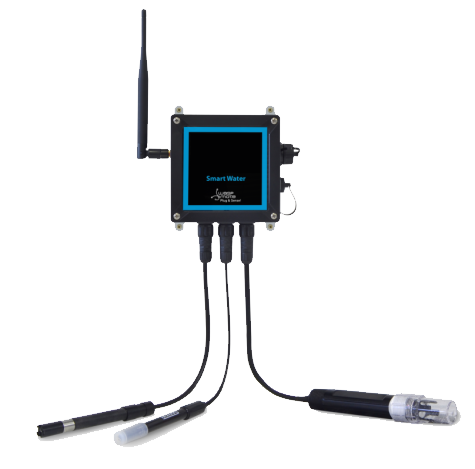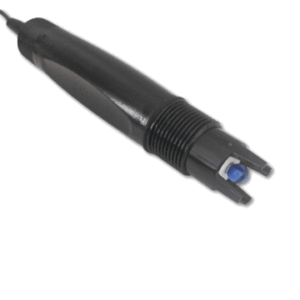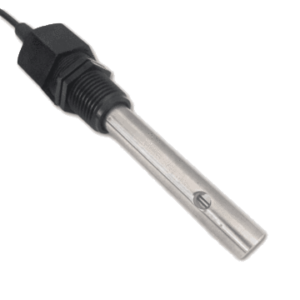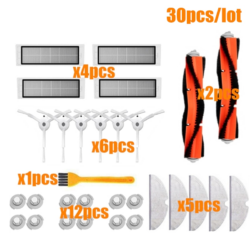Description
pH TESTING:
One of the most common water quality measurements taken is pH. pH is a measure of how acid or alkaline water is, but this is actually determined by the amount of free hydrogen and hydroxyl ions in the water. Water that has more free hydrogen is acidic, and conversely water that has more free hydroxyl ions is alkaline.
Measuring pH is in the range of 0 – 14: the scale is logarithmic, so each number represents a 10-fold change in pH. For example, water with a pH of 4 is ten times more acidic than water with a pH of 5. Within this range, a pH of 7 is neutral, any pH below 7 is acidic and any pH above 7 is alkaline. To give an example of this in context, normal rainfall has a pH of about 5.6, and a stream would be expected to have a pH in the range of 6 – 8.
It is important to monitor the pH of a water body because it affects aquatic organisms. Different organisms thrive in varying ranges of pH, and can be adversely affected by just a small change. An alteration in normal pH in a water body can be an indication of increased pollution or other environmental factors. This is due to the fact that pH can be affected by chemicals in the water. The solubility and biological availability of the chemical constituents of water are determined by pH.
These chemical constituents may be nutrients, such as phosphorus, nitrogen and carbon, and heavy metals, such as lead, copper and cadmium. The biological availability of nutrients will affect what organisms can survive in that water. Heavy metals are more soluble in water with a lower pH, which tends to make them more toxic to aquatic life – in particular fish.
Overly acid or alkaline water can have negative effects on water usage. For example, highly alkaline waters cause a bitter taste, and mean water pipes and appliances that use water become encrusted with deposits. Hard water (high pH) areas in the UK have issues with limescale deposits building up in kettles, washing machines, etc. Very low pH water will corrode or dissolve metals and other substances.
Probe specification
Measuring Range: 0 – 14 pH
Working Temperature: 0 – 80 °C (32 – 176 °F)
Body Material: plastic
Refillable: no
Theoretical slope: 98% @ 25 °C
Zero Point: 7 ±0.25 pH at 25 °C
Impedance: 200MΩ @ 25 °C
Response Time: ~7 s
Alkaline Error: < 15 mV @ 25 °C
Connector: BNC
Cable length: 3 m
Constant Immersion: yes
Ruggedized: yes, suited for industrial applications
Threading: 3/4 NPT on top and bottom for easy installation
Lifespan: Approximately 1 year under hydroponic use
pH Probe Datasheet
Lab Grade
- Measuring Range: 0 – 14 pH
- Working Temperature: 5 – 80 °C (41 – 176 °F)
- Body Material: plastic
- Refillable: no
- Theoretical slope: 97% @ 25 °C
- Zero Point: 7 ±0.25 pH at 25 °C
- Impedance: 250MΩ @ 25 °C
- Response Time: ~1 s
- Alkaline Error: < 15 mV @ 25 °C
- Connector: BNC
- Cable length: 1 m
- Dimensions:: 12×165 mm
Industrial pH Probe
- Measuring Range: 0 – 14 pH
- Working Temperature: 0 – 80 °C (32 – 176 °F)
- Body Material: plastic
- Refillable: no
- Theoretical slope: 98% @ 25 °C
- Zero Point: 7 ±0.25 pH at 25 °C
- Impedance: 200MΩ @ 25 °C
- Response Time: ~7 s
- Alkaline Error: < 15 mV @ 25 °C
- Connector: BNC
- Cable length: varies
The useful life of the probe is between 6 months to 1 year, dependant on use. Care must be taken to prevent breaking the probe. The glass bulb must always be submerged in liquid. For long-term storage, it should be kept in an appropriate storage solution.
Cleaning
Rinse with distilled water between uses to maintain the cleanliness of the probe.
For more thorough cleaning and/or reconditioning: Soak in a 4% HF for 5 seconds or HCl for 1-2 minutes. Then rinse with distilled water and store the probe in storage solution.
If the probe has been fouled:
| Contaminant | Clean with |
|---|---|
| Metal oxides | soak in 1M HCl |
| Grease | soap |
| Hydrocarbons | alcohol, acetone |
| Dyes | diluted HCl |
EC (ELECTRICAL CONDUCTIVITY) IN WATER
EC or Electrical Conductivity of water is its ability to conduct an electric current. Salts or other chemicals that dissolve in water can break down into positively and negatively charged ions. These free ions in the water conduct electricity, so the water electrical conductivity depends on the concentration of ions. Salinity and total dissolved solids (TDS) are used to calculate the EC of water, which helps to indicate the water’s purity. The purer the water the lower the conductivity. To give a real-life example, distilled water is almost an insulator, but saltwater is a very efficient electrical conductor.
Probe specification
Measuring Range: 0.5 – 12.0 mS/cm²
Working Temperature: 5 – 60 °C (41 – 150 °F)
Body Material: plastic
Electrode Material: 316L stainless steel
Cell Constant: 1.0 ±0.2
Connector: BNC
Cable length: 3 m
Dimensions: 12×155 mm
Cell-constant: K1 which is appropriate for mid-range EC measurements (hydroponics, pool or spa monitoring)
Constant Immersion: yes
Ruggedized: yes, suited for industrial applications
Threading: 3/4 NPT on bottom for easy installation
Lifespan: Approximately 1 year
EC Probe Datasheet
Lab Grade, Industrial, and Combined pH/EC
- Measuring Range: Lab and Combined: 0.2 – 12.0 mS/cm², Industrial: 0.5 – 12.0 mS/cm²
- Working Temperature: 5 – 60 °C (41 – 150 °F)
- Body Material: Lab: glass, Combined and Industrial: plastic
- Electrode Material: Lab and Combined: black platinum, Industrial 316L stainless steel
- Cell Constant: 1.0 ±0.2
- Connector: BNC
- Cable length: customizable
- Dimensions: 12×155 mm
The useful life of the probe is indefinite; it has no parts that will naturally degrade over the course of regular use. Care must be taken to prevent the electrodes from breaking and they should never be cleaned by direct touch.
Cleaning
Immerse in 10% nitric acid or hydrochloric acid solution for two minutes, then wash with distilled water. Do not scrub the electrodes, nothing should ever come into contact with them. If the acid solution isn’t working, try increasing the temperature and agitate the probe.






